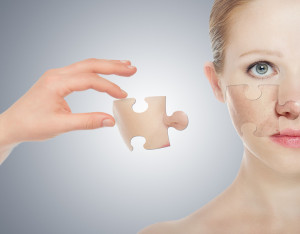- Calls to this hotline are currently being directed to Within Health or Eating Disorder Solutions
- Representatives are standing by 24/7 to help answer your questions
- All calls are confidential and HIPAA compliant
- There is no obligation or cost to call
- Eating Disorder Hope does not receive any commissions or fees dependent upon which provider you select
- Additional treatment providers are located on our directory or samhsa.gov
The Fashion Industry & Body Image; Transcending the Acquisition of Thinness
Contributor: Elizabeth Bloomfield-Deal, MA, PLPC, Elizabeth is a therapist at McCallum Place Eating Disorders Center in St. Louis.

However, we are not the same. Women, especially, range dramatically in size, shape, and appearance. Throughout life, our bodies are in a constant state of change. The fashion industry in particular perpetuates the myth that we can, and should appear in a certain likeness to what we see on the page and screen.
The Shrinking Cultural Ideal
The truth is the female body exists in an infinite variety of sizes and shapes, but in fashion magazines and on the runway only one shape is represented: tall and thin. The average American woman, according to women’s health expert Dr. Pamela Peeke, is 5’4” with a waist size of 34-35 inches. She weighs between 140-150 pounds, which equals a dress size of 12-14, which is drastically different than the average fashion model.
According to the New York Better Business Bureau, high fashion models need to be, “between 5’9” and 6’ and weigh between 110-130 pounds, with eyes widely spaced.” Let’s take a moment to look at reality. If a woman is 5’9 and weighs 110 pounds, her BMI is 16.2, which is considered underweight. In 1968, the average fashion model was 8% thinner than the average woman. Today models are 23% thinner. Our cultural ideal is shrinking.
The Attempt at Maintaining an “Ideal” Body

Mary Pipher, PhD, and author of Reviving Ophelia; Saving the Selves of Adolescent Girls, said the following. “I think anorexia is a metaphor. It’s the young woman’s statement that she will become what the culture asks of its women, which is that they be thin and nonthreatening.”
This statement rings so true with the fashion industry. In ways, marketing tells us who and what to be. Our voice as women is absent. Our individuality and uniqueness is replaced by the image of a thin, emotionless and starving woman. In reality, women’s bodies are soft and curvaceous. We possess hips that expand to give birth to a child, and breasts to feed our children. Even if we chose not to use our bodies for motherhood, we are born with bodies equipped for that purpose.
Restrictions Come to More than Just Food
When women starve themselves to achieve an ideal, they are not only restricting calories, but pleasure, balance and health. However, with all of the negative side effects, eating disorders do serve a function. They are effective in the short term. Eating disorders can be seen as a defense against uncomfortable feelings.
In the beginning, an eating disorder can even be exhilarating…until it is not. After running on low fuel for an extended period of time, bodies begin to break down. A malnourished brain causes one to feel anxious, depressed, confused and tired. At this time, some patients with eating disorders keep going due to motivation of a false sense of power and control.
Thin Enough Doesn’t Happen

The truth is that the thinner one becomes, the more anxious, depressed, cognitively impaired, distorted and physically weak they also become. Those who deny themselves food, and purge or fast to lose weight, will deplete their bodies of electrolytes and fluid necessary for normal heart, kidney, and liver function…rapid weight loss can mean metabolic collapse and/or sudden death (Roberto, 1993).
Someone suffering from an eating disorder is simply unable to see themselves in a realistic light.
The Fashion Industry Is a Factor, Not a Cause
It’s important to state that the fashion industry is not the cause of eating disorders. We are a culmination of our life experiences. The natural stresses and losses in life mixed with our culture’s notions of beauty are a toxic combination.
When women shop, whether it’s online, from catalogues, or in a store, we are confronted with an onslaught of unrealistic and unsustainable body shapes that have become the cultural ideal. The images are unrelenting. Even if one chooses not subscribe to fashion magazines or watch television, the images cannot be avoided.
The Inescapable Media

Katherine Zerbe, psychoanalyst and author of Body Betrayed, states, “At some point we all must deal with illness, aging, and the finiteness of life itself. To prepare for this confrontation with life’s vicissitudes, we must find meaning and purpose that transcend the acquisition of thinness and beauty.”
Community Discussion – Share your thoughts here!
Beauty takes on many different forms, in what ways do you see beauty within yourself and within others?
References:
- Pipher, M. (1994). Reviving Ophelia; Saving the Selves of Adolescent Girls. New York: Random House Press.
- Roberto, L. G. (1993). Eating Disorders as Family Secrets. In Secrets in Families and Family Therapy, ed. E. Imber-Black. New York: W.W. Norton.
- Zerbe, K. (1993). The Body Betrayed: Women, Eating Disorders, and Treatment. Washington DC: American Psychiatric Press.
About the Author:
Elizabeth Bloomfield-Deal, MA, LPC
Elizabeth is a therapist at McCallum Place Eating Disorders Center in St. Louis. She received her Bachelor of Science in English and Community health from Southern Illinois University and her Masters in Professional Counseling from Lindenwood University. She worked as a therapist at the Schiele Clinic of the St. Louis Psychoanalytic Institute and has completed the Advanced Psychodynamic Psychotherapy Program at the Institute.
She is a member of the American Counseling Association. Elizabeth enjoys facilitating groups such as sexuality, life narratives and family systems. Elizabeth uses psychoanalytic theory to help the patients utilize the therapeutic relationship as a place to explore the function of their eating disorder. She works to help the patients use their strengths to find balance and joy in their lives.
The opinions and views of our guest contributors are shared to provide a broad perspective of eating disorders. These are not necessarily the views of Eating Disorder Hope, but an effort to offer discussion of various issues by different concerned individuals.
Last Updated & Reviewed By: Jacquelyn Ekern, MS, LPC on May 15th, 2015
Published on EatingDisorderHope.com
